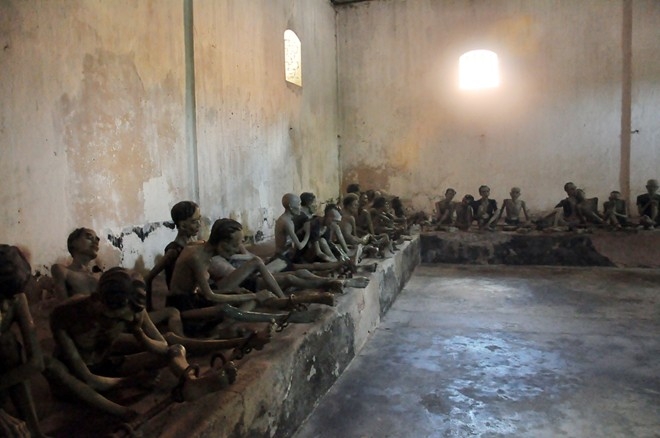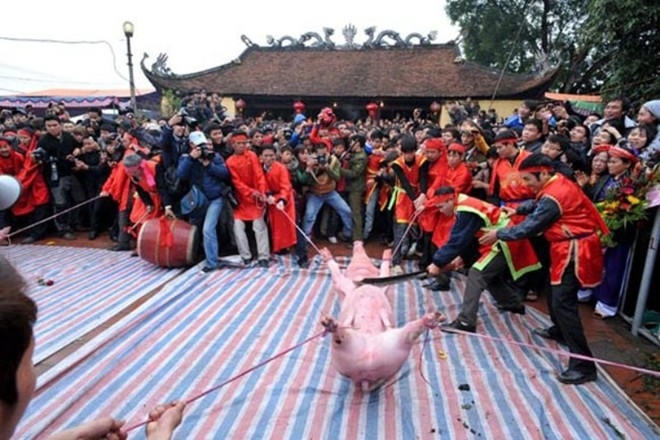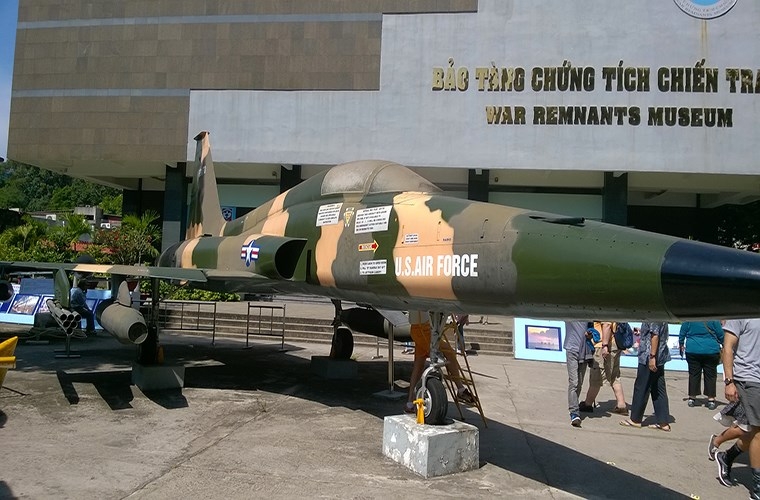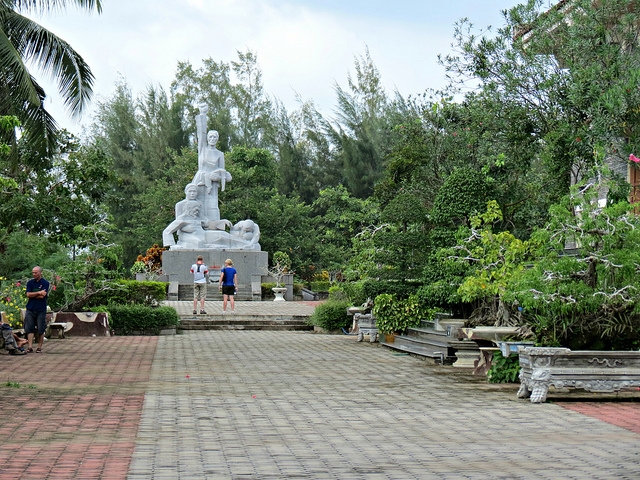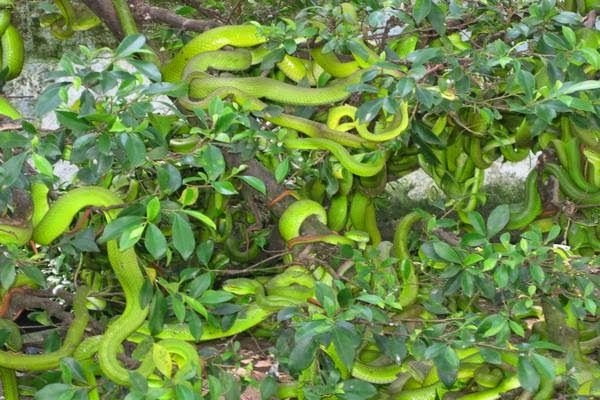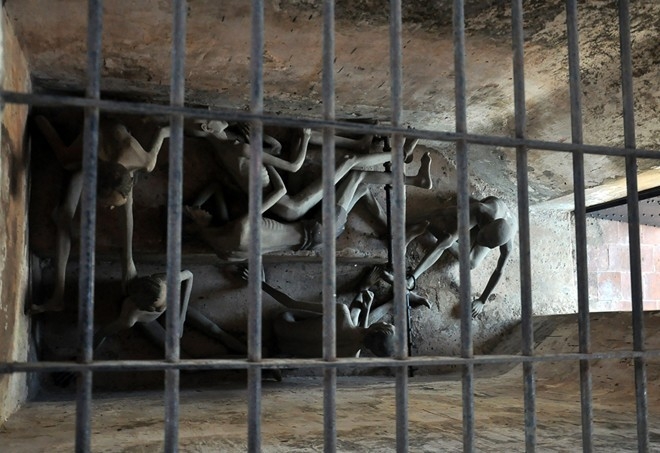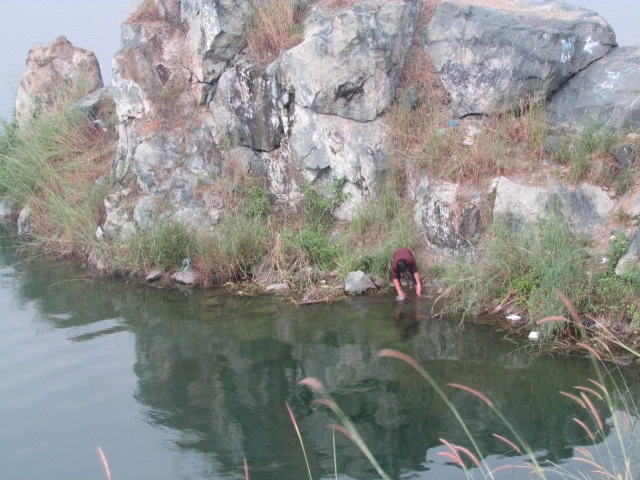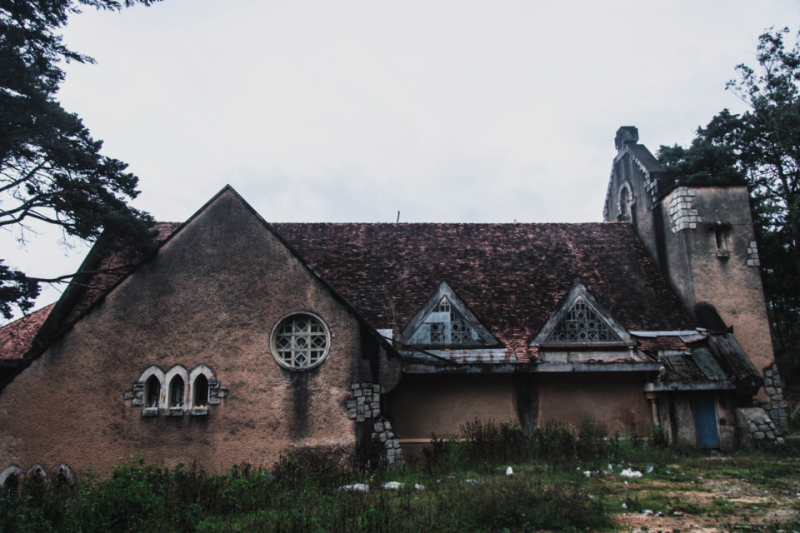The story of Hoa Lo Prison”Hell on earth” in the heart of Hanoi, after more than a century, is still the scariest place in Southeast Asia
If recently young people knew about Hoa Lo Prison through quality memes created by the admin team on
The scariest places in Vietnam will always give visitors an interesting experience when they come to explore. And the following list will list such places, guaranteed to please those who love horror and horror. We have heard, seen the stories and images of so many abandoned places around the world. Not to mention, in horror movies, have you ever looked at a character lost in a desolate place and imagined what it would be like if it were you. If you are curious, why not try a travel journey to discover such thrilling places, those places are really exciting for the adventurous, and of course, not for the faint of heart. hour.
Con Dao Prison is where the French and American troops built to brutally torture Vietnamese prisoners and this place is in 9th place in the top 10 scariest places in Asia.
Considered as the “hell on earth” of the revolutionary soldiers in the two resistance wars against France and the US with many forms of terrible torture, harsh torture not inferior to that of the Middle Ages, and led to the tragic death as well as extremely painful for many people. Many visitors must have really shuddered when witnessing many models of torture scenes at this place.
Con Dao Prison is a prison complex in Con Dao. This prison system was built by the French to hold prisoners who were especially dangerous for the French colonial regime such as political prisoners, death row prisoners… joined revolutionary movements and patriots against the colonial government, and was later used by the United States to hold prisoners of war during the war against America.
Currently, this place has been included in the list of 23 special national monuments by the Prime Minister of Vietnam. The most famous place in this prison complex is the “tiger cage”. This is the place to record the serious abuses of prisoners by the French colonialists, the US military, and the Nationalist regime of the Vietnam/Republic of Vietnam.
People in Nem Thuong village, Khac Niem commune (Tien Du, Bac Ninh) often organize a festival to cut pigs to sacrifice to the Saint on the 6th day of the Lunar New Year every year. The climax of the festival occurred when two offering pigs were brutally dismembered by four horses, blood splattered all over the yard in the excited cheers of those who witnessed. At the end of the worshiping ceremony, festival attendees usually hold change and dip it in pig’s blood, then bring it back and place it on the altar, praying for a prosperous and lucky year… Because of these horror-filled scenes which many people think is a horrible festival, it should be banned so that it can’t be continued in Vietnam.
This festival has a history of more than 800 years. According to the legend still told by the villagers, the festival was held in memory of a general during the civil war. When being chased by the enemy, this general led his troops to take refuge in Nem Thuong village. Because there was not enough food, while wild boars were abundant, he ordered the slaughter of pigs to feed the army. That general could be the warlord Nguyen Thu Tiep during the chaos of the 12 warlords or General Doan Thuong in the Ly dynasty.
According to “Bac Ninh, the strange province”, the custom of cutting pigs alive to sacrifice to the gods was the first of the twelve warlords. During his lifetime, he liked to eat raw pork. In the commune every year, the order was rotated, each year there were four people raising pigs, one for each person. Among the 12 warlords in the area of Khac Niem ward, there is also Nem Doai communal house very near Nem Thuong communal house worshiping the warlord Nguyen Thu Tiep because he occupied this area in the past.
Before the pig procession ceremony is the performance of singing Quan Ho in Bac Ninh by the brothers and sisters. At 10 am, the pig procession ceremony around the village before the time to sacrifice to the gods. As early as August of last year, the villagers chose the breeding pigs and the owners were suitable for their age and have good family circumstances to assign them the task of breeding, waiting for the holidays. Due to worshiping this solemn holiday, people call the pig Mr. The pig is kept in a pink cage, each weighing about 1.5 quintals. Wherever the procession goes, people flock there to drop money into the box to pray for good luck for the new year, inviting everyone in the procession to eat candy, meat or drink wine. When he returned to the communal house yard, the scene was crowded because everyone was looking forward to getting close to the place to witness the execution of the man with the knife.
Every time coming to this place, visitors can feel the pain and brutal truth of the two Vietnam wars through artifacts, as well as images that deeply denounce the destruction of the army. America, the suppression of the movement to fight for independence and reunification, and that is the legacy of Agent Orange, teratogens… Not only that, there is also a gallery about the border war. Southwest border, the war to protect the northern border, the issue of the Spratly archipelago… Therefore, the War Remnants Museum in Ho Chi Minh City. Ho Chi Minh City deserves to be one of the scariest places in Vietnam.
Currently, the War Remnants Museum is a unit under the Department of Culture, Sports and Tourism of Ho Chi Minh City. As part of the system of Vietnamese museums, museums for world peace and a member of the World Council of Museums (ICOM), the War Remnants Museum is a specialized museum that researches and collects, store, preserve and display documents, images and artifacts about the evidence of crimes and consequences of the wars that the invading forces have caused to Vietnam. Thereby, the Museum educates the public, especially the young generation, about the spirit of struggle to protect the independence and freedom of the Fatherland, the sense of fighting against wars and aggression, protecting peace and solidarity. friendship among the peoples of the world.
The museum holds more than 20,000 documents, artifacts and films, of which more than 1,500 documents, artifacts and movies have been introduced in 8 regular display topics. During 35 years of operation, the Museum has welcomed over 15 million domestic and foreign visitors. Currently, with about 500,000 visitors per year, the War Remnants Museum is one of the highly attractive cultural and tourist destinations, gaining the trust of the public at home and abroad.
My Lai ruins or Son My – Quang Ngai is a place to remember the Son My massacre (My Lai massacre) through very horrifying images, terrible stories, and names engraved on it. beer of more than 500 victims killed by the US military at this place on March 16, 1968 during the war in Vietnam. Visitors will be able to witness with their own eyes through pictures and documents the brutality of the war in Vietnam, even though many decades have passed, the evidences and relics are still there, leaving a haunting impression for many people. people.
Son My relic site, area 2.4ha, located in Khe Thuan hamlet (Tu Cung village, Tinh Khe commune) next to provincial road 24B from Quang Ngai town to Son My – My Khe – Sa Ky and clusters of relics: Ong Many field, watchtower, village road about 400m. The relic is located separately from the people’s house, including the original relics that have been preserved and embellished and the works that have been built in the future such as: additional galleries, reception places, monuments, garden statues.
Besides historical value, Son My relic site is the place to record typical crimes of the American invaders in the war of invasion in Vietnam, is the place to commemorate 504 of our compatriots who fell. Son My is also valuable for tourism, located in the Thien An tourist route (the grave of Huynh Thuc Khang) – Chau Sa – Son My – My Khe – Dung Quat. Every year, more than 50,000 people come to Son My to visit. Currently, each month there are nearly 3,300 visitors to visit.
Coming to Son My today, visitors can stop in front of the statue to feel the extreme pain of Son My victims that day. Inside the interior of the House of Relics, visitors can see many artifacts still preserved: an old brass tray with bullet holes, a shirt, and a pair of slippers of a child who was shot to death; All kinds of dishes, pots and pans were shot and broken, and the chanting muzzle of monk Thich Tam Tri was still recovered. Among those artifacts, Nguyen Thi Huynh’s hairpin was also found. After she was murdered, her lover recovered the hairpin, treasured it for 8 years before handing it over to the Evidence House…
Dong Tam Snake Farm is a large snake breeding center of the Mekong Delta region to research and treat snakebites for people living here. This place is considered a living museum of snakes, where visitors can observe the lives of thousands of snakes of different species in the environment such as natural snakes, ground cobras, cobras gills, and other wild animals. However, for those who are afraid of snakes, this place probably won’t be on their list of places they want to visit.
Dong Tam snake farm (also known as the Center for Cultivation, Research and Processing of Medicinal Materials of Military Region 9) is located about 9km west of My Tho city, in Binh Duc Commune, Chau Thanh district, Tien Giang province. This place has long become an attractive tourist destination for domestic and international tourists. Established on October 27, 1979 on a land full of mines and barbed wire left by the US, Dong Tam Snake Farm is responsible for scientific research, cultivation, and conservation of precious snakes and medicinal plants. , processing traditional medicine, first aid, and treatment of venomous snake bites for officials and people in the region.
Currently, the total area of Dong Tam Snake Farm is up to 12 hectares, including areas for raising precious snakes such as king cobras, ground cobras, rattlesnakes, cobras and cats, medicinal plants, and treatment hospitals. snakebite, research room, animal sanctuary, snake museum… In the green space of about 30 hectares of tall ancient trees is a unique and attractive eco-tourism area. Coming here, you feel like you’re lost in the “crazy maze” but full of attraction, a world with only snakes and snakes.
Hoa Lo Prison is located in the center of Hanoi, named after the street of Hanoi and dates back to before the French colonial period. This was once a place where many great revolutionaries of Vietnam were imprisoned. Hoa Lo Prison (now a historical site of Hoa Lo Prison) is located at 1 Hoa Lo Street, Hanoi. In the past, this land belonged to Nam Phu village, Tien Nghiem canton. In the mid-19th century, this village merged with Nguyen Khanh village to form Phu Khanh village, Vinh Xuong canton, Tho Xuong district, Hoai Duc district, Son Nam town.
Hoa Lo Prison, established by the French colonialists, tortured those who were active in the revolution for patriotism during the whole period of struggle against the French colonial rule. The dark chains of cells and guillotines used to execute many revolutionaries are kept in this relic, which will surely bring unforgettable experiences about a painful period of the people’s history. for those who have come here to visit.
Surrounding the prison is a solid wall built of stone 4m high, 0.5m thick, on top of bottle fragments and high voltage wires to prevent prisoners from escaping. At the foot of the inner wall is a 3m wide sidewalk used for guards to patrol around the prison area. The four corners have four watchtowers, capable of observing the entire inside of the patrol road and around the outside of the prison. Hoa Lo Prison is both a testament to the sacrifices, sufferings and indomitable spirit of struggle against the enemies of the Vietnamese revolutionary soldiers, as well as a condemnation of the brutal prison regime. of the French colonial regime during the colonial period in Vietnam.
Hoa Lo Prison was recognized as a historical relic by the Ministry of Culture, Sports and Tourism issued Decision No. 1543-QD/VH dated June 18, 1997. Currently, the Hoa Lo prison relic has become a “Red Address”, a place to educate patriotic and revolutionary traditions to all classes of people, especially the young generation of the Capital, which attracts a large number of tourists. domestic and international to visit, research and study.
Located on Phu Quoc island (in Kien Giang province), Phu Quoc prison was a prisoner of war camp in the center of Saigon before 1975, this place used to hold more than 32,000 prisoners during the Vietnam War. Prisoners here had to endure cruel punishments and tortures such as nailing nails to their hands, feet, head, burying them alive, or burning red zinc wire and then stabbing them into their skin, chiseling their teeth. This scene is only simulated and recreated, but it is enough to make visitors feel fear to the extreme.
Located in An Thoi town (Phu Quoc district, Kien Giang province), Phu Quoc Vietnam Communist POW Prison was built on an area of 400ha, with nearly 500 houses, divided into 12 zones (each area has 2 subdivisions) and 10 zones (each zone has 4 subdivisions named in the order A, B, C, D). Each camp can hold about 3,000 prisoners. Around each subdivision are 4 watchtowers guarding 24/24 hours and 10 mobile watchtowers. The camp is surrounded by nearly 10 layers of interlaced barbed wire. Surrounding the camp is completely empty, no people live, so it forms a “white belt” isolated from the outside.
Indeed, in the strong development of today’s “pearl island” Phu Quoc, tourism plays a very important role. In addition to the potential of sea tourism, destinations such as Phu Quoc Prison Historic Site have contributed to diversifying the province’s tourism products, being the “red address” of traditional education “Drink water, remember the source”. for the young generation, so that the epic between the seas about the spirit of independence and freedom will continue to resonate in every Vietnamese heart.
Ho Da is a very clear freshwater lake in Thu Duc university village and has attracted many students despite the danger to come here to swim, play, and enjoy the scenery. The water in the lake is so cold that it’s numb and surrounded by a craggy rock wall, if you accidentally fall into the lake, the risk of hitting your head on the rock is unavoidable. In addition, the bottom of the lake is not only muddy but also sharp jagged rocks, with extremely many large and small holes with different depths.
Looking at the lake is so calm, but it is not safe to swim a little deeper, the water suddenly changes temperature, cold like ice. In a radius of about 3m, there are places where the water is more than knee-deep, hip-width, in some places the hole is more than 20m deep. Therefore, people who come here to have fun and swim, think that it is shallow near the shore, jump into the bath, fall into the pit and miss their feet, leading to tragic and extremely unfortunate deaths.
Mr. Tran Quy clicked his tongue when talking about Da lake: “I’ve been a diver for so long, but I’ve never seen a freshwater lake as dangerous as this one. Looking at it so peaceful, everyone thought it was safe to swim a little deeper, the water suddenly changed temperature, cold as ice. Moreover, within a radius of about 3 meters, there are places where the water is only up to the knees and hips, and there are places where the hole is more than twenty meters deep. Therefore, the students thought that they were dry near the shore, jumped into the bath, fell into the pit and missed their feet, only water died.”
It is estimated that the deepest part of the lake can be more than 50 meters. Moreover, according to our observations, around the lakeside, there are many jagged, craggy cliffs, pointed rocks… Just being careless, it is easy to trip over rocks and fall into the lake bed. Because of such a dangerous terrain, calling Da Lake a “lake of death” is not unfair to it at all. Currently, the government has set up barriers and danger signs around the lake, but somehow, there are still many people rushing into Da lake to bathe, swim, … or climb the cliffs to enjoy the view, play. This makes students and residents look down on this potentially dangerous place, and tragic murders continue every year at Da Lake…
Although there are no tragic images of war, torture or death scenes such as fortifications, bombs, guns, and ammunition, people also feel fear. It currently displays the largest bomb in Vietnam and hundreds of different types of bombs, mines and explosives.
Bombs weighing over 100 kg and nearly 7 tons are arranged in the shape of a “B-52 flying super fortress” in the central area of the museum. This place also keeps the largest torpedo with a diameter of over 2.5 meters, containing 180 kg of C4 explosive, which is a “top secret weapon”, and only 10 were used to knock down the Ham Rong bridge (Thanh Hoa). chemistry) has an estimated research and production cost of about $1 billion (in 1965 prices).
The Museum of Engineers belongs to the Political Department, the Army Corps of Engineers, the People’s Army of Vietnam in the military history type, has the task of researching, collecting, inventorying, displaying, propagating and introducing the materials and artifacts of historical, cultural and scientific value, reflecting the process of building, fighting and growing up of the Engineer Army in the cause of national liberation, national defense, construction and protection. defend the Fatherland. The museum is located at 290 Lac Long Quan Street, Buoi Ward, Tay Ho District, Hanoi, near West Lake.
Although, Ho Thuy Tien water park has an ideal and beautiful location when it is located right near Thien An hill – a very famous tourist destination in Hue with extremely beautiful natural scenery and pure temples. extremely attractive to tourists, but this place is mysteriously abandoned and unanswered.
Today, “Ho Thuy Tien” has completely disappeared and is “opened” for free for those who are adventurous to explore. Most tourists come to this abandoned water park just to try the feeling of adventure and horror just like in horror movies, not to see an architecture that has been destroyed. forgotten in the past. In addition, along with the movement of “exploring” the number 1 horror place in Hue among young people, some people also take advantage of this place to trade drinks.
Tourists coming to Vietnam will never know the place of Ho Thuy Tien Water Park in Hue. And it’s not even on maps or any media. If you ask the locals about this “strange” name, you will certainly not get the answer you want. It seems that the place “Ho Thuy Tien” has been forgotten for a long time and no one can remember it anymore.
Any of us when asked: “Where is the most mysterious place in Vietnam” is guaranteed that Da Lat will be called first. With abandoned villas on the hill, then the climate is cold, the sun goes down and the fog closes to the ground. So, for a long time, Da Lat has always made people “shudder” by such things. Who dares to enter those houses since dawn.
The murky space, tiled roofs and paths were covered with moss, creating an indescribable “cold neck”. That’s not to mention the many mysterious stories that are passed on to each other, if you have a weak heart, don’t come here to remember. However, the chapel is located on a small hill, surrounded by pine trees, so it has a very typical beauty of Da Lat. Quite suitable for getting quality “virtual live” photos.
Da Lat’s passionate glaze comes not only from the immense pine forests and Western European roads but also from the mysterious mist woven from the time-tinted stories of the ancient houses. Among the impressive works, it is impossible to ignore the Franciscaines chapel – an abandoned monastery covered in mossy colors isolated in the lurking pine forest. Just hearing the description is a bit creepy, warning weak heart, don’t be curious.
Perhaps everyone dreams of once getting lost in the fairy forest, surrounded by green pine forests, walking along the overgrown grassy road and then suddenly stopping in front of the magnificent castle. Da Lat also has a place like that, there is no need to wait for a miracle, but in the real life version, the magnificent castle is an abandoned monastery with deep ancient colors. And the feeling on a smoky afternoon of Da Lat, wandering alone through the massive blocks of decades ago, will surely bring you unforgettable experiences.
Not the places on the hills or in the city anymore, the church is located along the Xuong Dien beach (Hai Ly commune, Hai Hau district, Nam Dinh). Nam Dinh Church has been abandoned for more than 20 years, only the outer frame wall remains. Standing in this place when it is already dark, in front of you is a vast, black sea, behind you is a ruined church, covering you is a feeling of loneliness and shivering. Camping here with friends, and then telling thrilling stories is quite a fascinating experience.
However, at dawn, the sun flooded the church, creating a very impressive beauty. You will surely get a lot of beautiful pictures. In addition, about 1km from the church, there is a salt field that is also a destination for tourists who love to explore marine life.
The wild beauty next to the livelihood of the industrious and simple fishermen in the midst of peaceful nature brings new feelings to visitors. There are many seafood specialties such as crabs, crabs, shrimp (shrimp, boat shrimp, shrimp, shrimp), sweet potato, squid… Although not big, but fresh and delicious because people catch near the shore, in the morning go. , afternoon. There are many anchovies, also known as Arowana fish, here. Fish used to make fish sauce.
Visitors can buy seafood right on the beach, ask the locals to cook and enjoy it right on the sand. In the afternoon, people come here to enjoy the fresh and cool sea air. In addition to the church and the fishing village, you can go to the salt field about a kilometer away to visit, take pictures, or further to Thinh Long and Quat Lam beaches (10km away).
This is an abandoned place that many people probably do not know. Because the manual brick kilns on the Sa Dec river in Chau Thanh – Dong Thap caused environmental pollution, it was backward and did not bring high economic efficiency, so it was abandoned. This is probably the abandoned place with the most unique scenery of all the must-check-in mysterious places. From afar, thousands of old, mossy brick kilns have made people eager to explore. Stepping inside, trees and wildflowers are everywhere, making the mysterious beauty of this place even more unique.
Abandoned brick kilns, overgrown weeds, vines covering the whole kiln. There is a furnace with the vines still intact, crawling from the top of the furnace to the ground, like Thach Sanh’s rope down to save the princess in the past. Entering the furnace, startled by the similarity with the thousand-year-old Cham towers. Especially the ancient towers of the Sambor Prei kuk population (Kampong Thom, Cambodia), a world heritage site, the capital of the Khmer empire from the world. VI – VIII centuries. The only difference is that the Cham towers, ancient towers are square or rectangular, and brick kilns are usually round.
The consolation is that the brick kilns are deserted, still regularly visited by visitors from near and far. All over ASEAN and the whole world seems to be invisible. Taking a selfie and posting it online, friends’ eyes widened in surprise. If you have a drone, even better. Fortunately, Dong Thap province promptly prevented the wave of wiping out the old brick kilns. Dozens of abandoned brick kilns in An Hiep and Chau Thanh will be kept for tourism purposes.
Dong Thap brick kilnThose in the capital Hanoi do not have to go far to make a journey to discover famous mysterious places, because even in Ba Vi National Park , there are also abandoned villas and houses. wild a long time ago.
In Ba Vi National Park, there are still many remnants of French architecture such as villas, colonel palaces, churches, orphanages… only the frame with walls covered with green moss and clinging roots remains. interlaced everywhere. Here, when it is dark until it is completely dark, it will make you “cry out” with old stories. The vestiges of a crowded time here will make you think of many scary stories.
It looks scary when it’s dark, but during the day, the sun is slanting through the windows, reflecting on the old walls, creating an impressive beauty. That’s why this place is a favorite place to make wedding photos, music videos.
Abandoned Villa in Ba Vi National ParkThe scariest places in Vietnam are extremely interesting tourist destinations for those who love to explore and learn about the history and terrain of Vietnam. Do you think we should take the risk to visit one of these places to satisfy our curiosity to discover the wonderful things in life?
